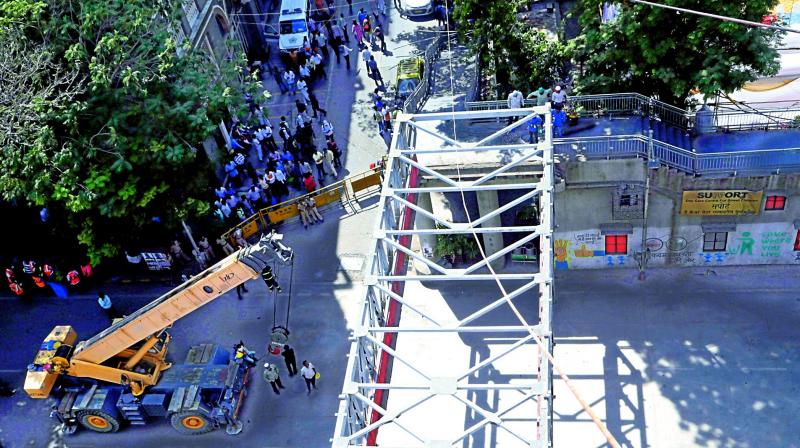Mumbai bridge crash a lesson for all babus
Incident highlights need to hold civic bodies accountable.

Hyderabad / Mumbai: The collapse of the Himalaya foot over bridge in south Mumbai, popularly known as Kasab Bridge, has raised the question of negligence under civil and criminal law of torts of the Indian Penal Code and the need to make local government bodies and the state government accountable for the accident that left six people dead and 31 injured.
A case has already been initiated against officials of the Brihan-mumbai Municipal Cor-poration and Central Railway (CR) under section 304-A of the IPC (causing death by negligence).
Senior lawyer Sujay Kantawalla said, “Law of torts is basically filed seeking damages. It does not provide for any action against errant officers. In this case, the police have filed an FIR under section 304 (A), which is an eyewash and provides punishment only for two years. The police should have imposed section 304 (II) which is non-bailable and provides 10 years of imprisonment.”
An incident such as this, which is caused by negligence on the part of government authorities, but for which they are not made liable, has agitated citizens who want to make the government legally accountable.
Mr K. Ramakrishna Reddy, former advocate-general of Telangana, says, “The law of tort has the potential to empower an individual against private persons and government authorities. However, in India, unlike in the US, torts claims and punishment for public authorities for their negligence have been overlooked by the government. Even from the judiciary side the law has not been effectively used.”
In cases related to negligence of authorities, the Supreme Court has held that the liability of the government does not end with action against its officers. It elaborated on the “vicarious liability” of the state for the actions of its officers and diluted the immunity of the government in negligence cases, he said.
Former advocate-general of Maharashtra Srihari Aney, said, “It is an aspect of civil law and it is possible for a citizen to take action against the state or whichever is the concerned authority for such a calamity. But a civil suit in which you claim damages will proceed according to “tort law” and it will be a suit for damages only. It can be filed mainly by affected people or someone whose right is affected. Very often the tort action is replaced either by insurance or by specific claim action (like the Railways Claims Tribunal), which are governed by specific statutes of law.”
G. Vidya Sagar, a senior advocate, said that in this particular case, a PIL should be moved before the High Court or the Supreme Court rather than choosing Law of Torts, as the incident caused the death of persons, injuries and loss of public money due to the negligence of the public authorities.
Professor Dr V. Bala-kista Reddy, registrar and dean of Internat-ional Law at Nalsar University, says that in our country the liability of the state for tortious acts still gets immunity and it will be a long time before we actually see action.

